Bay leaf plants (Laurus nobilis) Profile
Written by Iris
Oct 22 2021
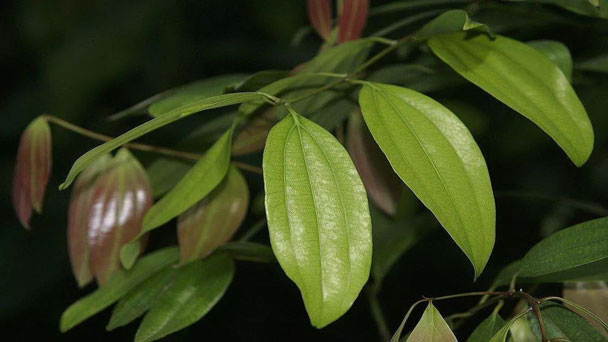
Bay leaves (Laurus nobilis) add aroma to our soups and stews, but have you ever thought about growing Bay Leaf Plants? Seasonings are so common, it's easy to forget that Bay leaves come from a growing tree. Bay Leaf Plants are 40 - to 50-foot (12 - to 15-meter) tall trees native to the Mediterranean region. Bay Leaf Plants were once made into wreaths to crown the winners of ancient Greek games. Bay Leaf Plants are considered to be among the oldest cultivated trees.
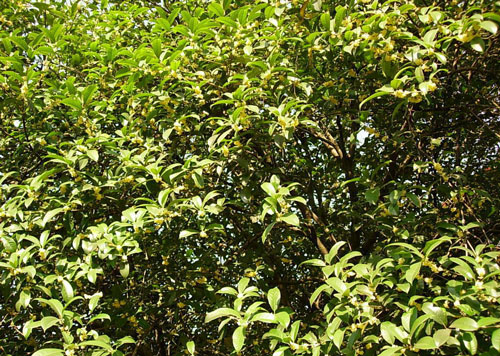
The Bay Leaf Plants is dioecious (unisexual), with male and female flowers on separate plants. Each flower is pale yellow-green, about 1cm (0.4 inch) diameter, and they are borne in pairs beside a leaf. The fruit is a small, shiny black berry about 1cm (0.4 inch) long. Potted grown specimens seldom flower and fruit.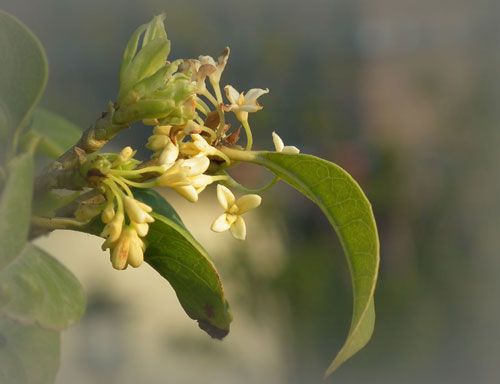
Bay Leaf Plants (Laurus nobilis) are dioecious, which means that both male and female bay leaf plants are necessary to produce viable seeds. These seeds will only form on female Bay Leaf Plants when their small yellow flowers give way to small, dark purple egg-shaped berries in the fall. Inside each berry is a seed. Remove the pulp from the berries and plant the seeds immediately. If you do not plant immediately, or buy dried seeds, soak them in warm water 24 hours before planting. Plant Bay Leaf Plants under a thin layer of moist growing medium. Keep the medium moist and warm at about 70 degrees F (21 degrees C). Seeds can take anywhere from 10 days to 6 months to germinate.
Bay Leaf Plants Propagation with Stem Cuttings
Cuttings of Bay Leaf Plants are best picked in mid-summer, when new branches are already half-ripe. Cut about 6 inches (15 cm) from the ends of the stems, removing all the leaves except those at the top. Place cuttings of Bay Leaf Plants in a good growth medium (note: If desired, you can immerse the ends in rooting hormones first). Keep it moist and out of direct sunlight. Rooting is not always successful and can take months.
Bay Leaf Plants Propagation with Air Layering
Air layering takes longer than propagating from cuttings, but it also has a higher success rate. Choose a healthy, long stem that's one to two years old, remove all offshoots, and cut into a bud. Apply rooting hormone to the wound and wrap it in moist sphagnum moss, held in place by plastic. Roots should eventually start to grow into the moss.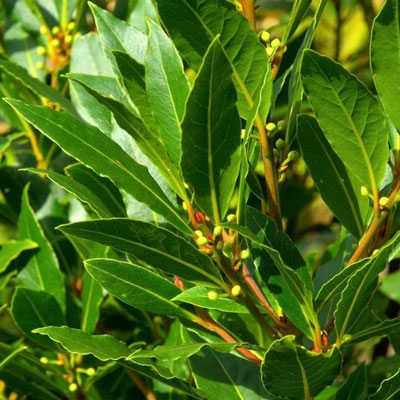
If you're growing bay leaf plants (Laurus nobilis) indoors, winter them near a sunny window. Avoid exposure to air and heat from electrical appliances. Outdoor plants prefer partial shade but can tolerate full sunlight. In hot, dry areas in summer, the afternoon shade is ideal.
Soil Care
Bay Leaf Plants (Laurus nobilis) thrive in slightly acidic soils, and Bay Leaf Plants have pH preferences similar to those preferred by other Mediterranean herbs. If your soil properties are particularly alkaline, you may find it easier to grow bay leaf Plants in containers rather than underground.
Water Care
Regular watering is required during hot or dry periods. Water Bay Leaf Plants regularly throughout the summer and check the soil every few days. Check by feeling the wetness of the first inch of soil on top. If it feels dry, water Bay Leaf Plants deep enough to make sure the water drains freely from the basin. Bay Leaf Plants do not respond well to wet feet or sodden soil, so making sure pots are well drained is an important step.
Temperature and Humidity Care
Bay Leaf Plants is only hardy in USDA hardiness zones 8 through 10. In cooler areas, bring it indoors for the winter and give it relatively cool conditions. However, you may have trouble keeping your indoor Bay Leaf Plants from drying out in the low humidity of your home. When it signals trouble by dropping a few leaves, use the leaves in cooking and begin misting the tree regularly with water.
Fertilizer Care
Bay Leaf Plants (Laurus nobilis) become hungry during the growing season and may need some slow-release fertilizer. Start adding slow release fertilizer pellets or a layer of organic material (mulch) to the topsoil throughout spring or summer. This will allow nutrients to slowly seep into the soil for use by Bay Leaf Plants. Pruning Care
For Bay Leaf Plants, remember to prune because the plant will grow in the surrounding environment. Whether your Bay Leaf Plants are grown as shrubs, pruned trees, or full-size trees, you want to remove any damaged or dead leaves or branches each spring. You can thoroughly prune mature Bay Leaf Plants, but keep in mind that regeneration will be slow. Instead, do moderate pruning every other year to preserve green leaves while new growth develops.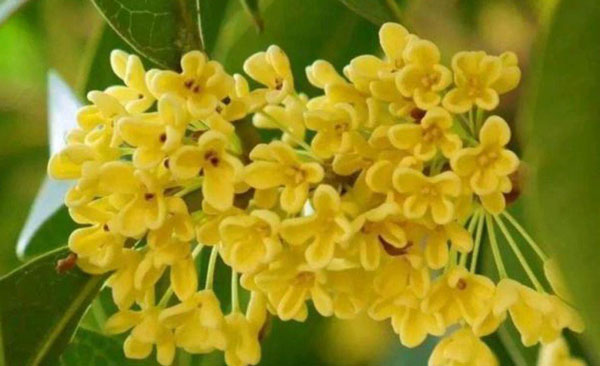
Bay leaves are an important ingredient in the classic bouquet garni vanilla mixture. The mixture is commonly used in poultry, soups and stews. You can also use dried or fresh bay leaves alone to flavor meats, fish, poultry, soups, sauces, stews, grains, and vegetables.
Keep in mind that your use of bay leaves depends largely on the methods you implement to preserve them. Dried leaves are best for slow-cooked dishes such as soups. Bay leaves taste best when fresh or frozen in foods such as risotto, fish, poached dishes and sausages as they will provide a more subtle flavour.
Even if you live in a warm climate, bay leaves are a staple in any housewife's kitchen -- and you can save some money and grocery shopping by growing them in containers at home.
The plan provides great visual interest to the landscape and also helps beautify your cooking. With so many potential benefits both in the kitchen and in the garden, this tree is the one you definitely need to try.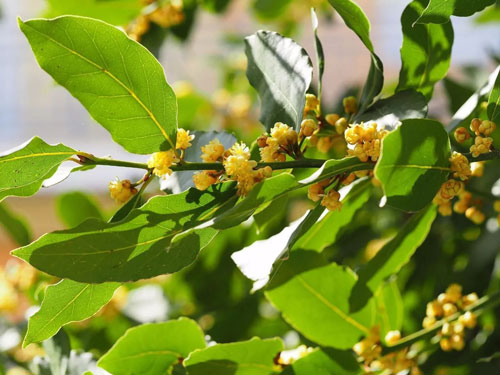
Laurus nobilis 'Angustifolia': Also known as willow-leaf laurel, the narrow leaves of this cultivar are prized for their attractive texture when the tree is pruned.
Laurus nobilis 'Aurea': This variety exhibits new leaves that are bright yellow and aromatic.
Laurus nobilis 'Undulata': With this cultivar, the leaf edges are rippled or wavy, making it a particularly ornamental tree.
Laurus nobilis 'Saratoga': This is a smaller tree when planted in the landscape, growing to a maximum of 30 feet. The leaves are more rounded and lighter in color. It makes a good variety for food seasoning leaves.
These are usually signs of standing water or damage from cold weather, but can also indicate nutrient deficiencies, especially in container-grown Bay Leaf Plants.
Leaf spots
This usually indicates a problem with standing water or wet weather. Bay Leaf Plants in containers are more prone to this problem. This usually indicates that compost must be updated and Bay Leaf Plants should be repotted.
Peeling/cracking on lower stems:
This is usually caused by harsh winter weather, and while it looks bad, as long as the rest of the Bay Leaf Plants are growing normally, it shouldn't be fatal and your Bay Leaf Plants should recover.
The leaf
This is another sign of environmental problems. Watch out for drainage, watering and shelter. This may not mean the end of Bay Leaf Plants.
Curly leaves with pale yellow/brown edges
If Bay Leaf Plants have curly leaves that look ugly and discolored, look for small gray insects just below the edges of the curly leaves. You probably have a box of Bay Leaf Plants suction cups. While unsightly, the good news is that the long-term health of plants is usually unaffected. Remove and dispose of affected leaves.
Scale insects
Bay Leaf Plants may be affected by soft scales or horse-chestnut scales. These tiny insects can be seen under leaves or on stems. You may not have to do anything because the growth of Bay Leaf Plants may not be affected. But attracting or introducing predatory insects can help restore the natural balance in your garden. Parasitic wasps are sometimes introduced for biological control of soft scales.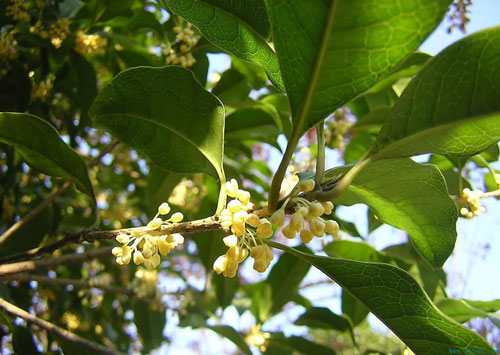
Bay Leaf Plants PictureBay Leaf Plants InfoBay Leaf Plants Native HabitsBay Leaf Plants DistributionHow to Grow & Care for Bay Leaf PlantsHow to Grow Bay Leaf PlantsHow to Care for Bay Leaf PlantsBay Leaf Plants UsesBay Leaf Plants VarietiesBay Leaf Plants Common Pests/DiseasesHarvesting Bay LeavesPreserving Bay LeavesBay Leaf Plants Companion Plants
Bay Leaf Plants Picture

Bay Leaf Plants Info
| Botanical Name | Laurus nobilis |
| Common Name | Bay laurel, laurel, bay tree, |
| Plant Type | Broadleaf evergreen shrub or small tree |
| Mature Size | 10–60 feet tall, 5–20 feet wide; container plants are generally kept pruned to 4–6 feet |
| Sun Exposure | Full sun to part shade |
| Soil Type | Any well-draining soil; general-purpose potting mixes for potted plants |
| Soil pH | 4.5–8.3 (acidic to alkaline) |
| Bloom Time | Late spring to early summer |
Bay Leaf Plants Native Habits
Bay Leaf Plants (Laurus nobilis) is an aromatic evergreen tree or large shrub with a broad base with many stems. The stems bear dense, pointed, elliptical leaves, rather leathery in texture, bright green when young and darker green when mature. The leaves are 6–12cm (2.5-5 inch) long and 2–4cm (0.8-1.6 inch) broad with smooth margins; on some leaves the margin undulates. The aroma of the leaves is not free; leaves have to be rubbed to release it.The Bay Leaf Plants is dioecious (unisexual), with male and female flowers on separate plants. Each flower is pale yellow-green, about 1cm (0.4 inch) diameter, and they are borne in pairs beside a leaf. The fruit is a small, shiny black berry about 1cm (0.4 inch) long. Potted grown specimens seldom flower and fruit.
Bay Leaf Plants Distribution
Bay Leaf Plants (Laurus nobilis) are a member of the family lauraceae. These trees are native to the Mediterranean region and the leaves are often used in Mediterranean recipes. Instead of grinding the spices, even when dried, the leaves are used whole in recipes. Bay Laurel was considered a sacred plant to the Greeks and Romans.
How to Grow & Care for Bay Leaf Plants
How to Grow Bay Leaf Plants
Bay Leaf Plants Propagation with SeedsBay Leaf Plants (Laurus nobilis) are dioecious, which means that both male and female bay leaf plants are necessary to produce viable seeds. These seeds will only form on female Bay Leaf Plants when their small yellow flowers give way to small, dark purple egg-shaped berries in the fall. Inside each berry is a seed. Remove the pulp from the berries and plant the seeds immediately. If you do not plant immediately, or buy dried seeds, soak them in warm water 24 hours before planting. Plant Bay Leaf Plants under a thin layer of moist growing medium. Keep the medium moist and warm at about 70 degrees F (21 degrees C). Seeds can take anywhere from 10 days to 6 months to germinate.
Bay Leaf Plants Propagation with Stem Cuttings
Cuttings of Bay Leaf Plants are best picked in mid-summer, when new branches are already half-ripe. Cut about 6 inches (15 cm) from the ends of the stems, removing all the leaves except those at the top. Place cuttings of Bay Leaf Plants in a good growth medium (note: If desired, you can immerse the ends in rooting hormones first). Keep it moist and out of direct sunlight. Rooting is not always successful and can take months.
Bay Leaf Plants Propagation with Air Layering
Air layering takes longer than propagating from cuttings, but it also has a higher success rate. Choose a healthy, long stem that's one to two years old, remove all offshoots, and cut into a bud. Apply rooting hormone to the wound and wrap it in moist sphagnum moss, held in place by plastic. Roots should eventually start to grow into the moss.

How to Care for Bay Leaf Plants
Light CareIf you're growing bay leaf plants (Laurus nobilis) indoors, winter them near a sunny window. Avoid exposure to air and heat from electrical appliances. Outdoor plants prefer partial shade but can tolerate full sunlight. In hot, dry areas in summer, the afternoon shade is ideal.
Soil Care
Bay Leaf Plants (Laurus nobilis) thrive in slightly acidic soils, and Bay Leaf Plants have pH preferences similar to those preferred by other Mediterranean herbs. If your soil properties are particularly alkaline, you may find it easier to grow bay leaf Plants in containers rather than underground.
Water Care
Regular watering is required during hot or dry periods. Water Bay Leaf Plants regularly throughout the summer and check the soil every few days. Check by feeling the wetness of the first inch of soil on top. If it feels dry, water Bay Leaf Plants deep enough to make sure the water drains freely from the basin. Bay Leaf Plants do not respond well to wet feet or sodden soil, so making sure pots are well drained is an important step.
Temperature and Humidity Care
Bay Leaf Plants is only hardy in USDA hardiness zones 8 through 10. In cooler areas, bring it indoors for the winter and give it relatively cool conditions. However, you may have trouble keeping your indoor Bay Leaf Plants from drying out in the low humidity of your home. When it signals trouble by dropping a few leaves, use the leaves in cooking and begin misting the tree regularly with water.
Fertilizer Care
Bay Leaf Plants (Laurus nobilis) become hungry during the growing season and may need some slow-release fertilizer. Start adding slow release fertilizer pellets or a layer of organic material (mulch) to the topsoil throughout spring or summer. This will allow nutrients to slowly seep into the soil for use by Bay Leaf Plants. Pruning Care
For Bay Leaf Plants, remember to prune because the plant will grow in the surrounding environment. Whether your Bay Leaf Plants are grown as shrubs, pruned trees, or full-size trees, you want to remove any damaged or dead leaves or branches each spring. You can thoroughly prune mature Bay Leaf Plants, but keep in mind that regeneration will be slow. Instead, do moderate pruning every other year to preserve green leaves while new growth develops.

Bay Leaf Plants Uses
Use bay leaves in the homestead kitchenBay leaves are an important ingredient in the classic bouquet garni vanilla mixture. The mixture is commonly used in poultry, soups and stews. You can also use dried or fresh bay leaves alone to flavor meats, fish, poultry, soups, sauces, stews, grains, and vegetables.
Keep in mind that your use of bay leaves depends largely on the methods you implement to preserve them. Dried leaves are best for slow-cooked dishes such as soups. Bay leaves taste best when fresh or frozen in foods such as risotto, fish, poached dishes and sausages as they will provide a more subtle flavour.
Even if you live in a warm climate, bay leaves are a staple in any housewife's kitchen -- and you can save some money and grocery shopping by growing them in containers at home.
The plan provides great visual interest to the landscape and also helps beautify your cooking. With so many potential benefits both in the kitchen and in the garden, this tree is the one you definitely need to try.

Bay Leaf Plants Varieties
It's very important that you grow only plants labeled laurus nobilis if you plan to use the leaves for cooking and eating. There are other plants that go by the common names of bay and sweet bay, but these are not necessarily edible. There are also a few ornamental cultivars of Laurus nobilis that may not have quite the same taste as the pure species plant.Laurus nobilis 'Angustifolia': Also known as willow-leaf laurel, the narrow leaves of this cultivar are prized for their attractive texture when the tree is pruned.
Laurus nobilis 'Aurea': This variety exhibits new leaves that are bright yellow and aromatic.
Laurus nobilis 'Undulata': With this cultivar, the leaf edges are rippled or wavy, making it a particularly ornamental tree.
Laurus nobilis 'Saratoga': This is a smaller tree when planted in the landscape, growing to a maximum of 30 feet. The leaves are more rounded and lighter in color. It makes a good variety for food seasoning leaves.
Bay Leaf Plants Common Pests/Diseases
Yellow leavesThese are usually signs of standing water or damage from cold weather, but can also indicate nutrient deficiencies, especially in container-grown Bay Leaf Plants.
Leaf spots
This usually indicates a problem with standing water or wet weather. Bay Leaf Plants in containers are more prone to this problem. This usually indicates that compost must be updated and Bay Leaf Plants should be repotted.
Peeling/cracking on lower stems:
This is usually caused by harsh winter weather, and while it looks bad, as long as the rest of the Bay Leaf Plants are growing normally, it shouldn't be fatal and your Bay Leaf Plants should recover.
The leaf
This is another sign of environmental problems. Watch out for drainage, watering and shelter. This may not mean the end of Bay Leaf Plants.
Curly leaves with pale yellow/brown edges
If Bay Leaf Plants have curly leaves that look ugly and discolored, look for small gray insects just below the edges of the curly leaves. You probably have a box of Bay Leaf Plants suction cups. While unsightly, the good news is that the long-term health of plants is usually unaffected. Remove and dispose of affected leaves.
Scale insects
Bay Leaf Plants may be affected by soft scales or horse-chestnut scales. These tiny insects can be seen under leaves or on stems. You may not have to do anything because the growth of Bay Leaf Plants may not be affected. But attracting or introducing predatory insects can help restore the natural balance in your garden. Parasitic wasps are sometimes introduced for biological control of soft scales.

Harvesting Bay Leaves
You can harvest bay leaves at any time -generally, as long as they are big enough to use. The best flavors come from larger, older leaves. Cut them whole, trying not to damage the stems. Lay the leaves flat to dry, then crush them or use them whole. You can harvest bay leaves at any time of the year. Bay leaves taste best in summer, but large leaves will be more fragrant than tender buds.Preserving Bay Leaves
Although bay leaves can be used fresh, you have a variety of choices for long-term use. One of the most popular is dehydration. You can collect leaves into bundles and tie them together to dry in the sun, or dry them in a commercial dehydrator. Bay Leaf Plants can also be dried in an oven at low temperatures (about 100 degrees). Alternatively, you can freeze bay leaves. Simply place the leaves in a plastic container or freezer bag and place them in the deepest part of the fridge. This will make the Bay leaves cool faster and retain the fresh flavor and texture of the leaves, which you can store in the fridge for up to three months without losing any flavor.Bay Leaf Plants Companion Plants
The versatile habit of Laurus nobilis allows pairing it with a variety of Mediterranean plants. Grow it along with other fragrant, culinary herbs such as Rosmarinus officinalis (Rosemary), Lavandula species (Lavender) and Origanum vulgare (Oregano). Adding other trees which produce edibles fruits like Punica granatum (Pomegranate), Citrus species (Citrus) and Olea europaea (Olive) will turn this garden in true kitchen garden.Latest Updated
- Benefits of Bugleweed - 7 Science-backed Health Benefits
- Bugleweed Dangers & Side Effects - Is It Poisonous?
- How to Plant Evergreen Trees - What You Should Know
- When to Plant Evergreens - Grow Guide for Evergreen Trees
- 12 Wonderful Evergreen Shrubs for Your Garden
- 12 Popular Evergreen Plants with Pictures for Beginners
- When And How To Prune A Lilac Bush Like a Pro
- How to Grow & Care for Lilac Vine (Hardenbergia Violacea)
- Japanese Lilac Tree (Syringa Reticulata) Care & Propagation Guide
- Shumard Oak Pros and Cons - What to Know
Popular Articles
- Winter maintenance of Antirrhinum Majus
- How to Grow Terminalia Mantaly Tree
- How to Grow and Care for Crossostephium Chinense
- How to grow Antirrhinum Majus in spring
- Peristeria Elata (Dove Orchid) Profile: Info & Care Guide
- Underwatered Snake Plant (Sansevieria Trifasciata) - Signs And How To Fix
- How to Care for Brazilian Jasmine Plant (Mandevilla Sanderi)
- How to Grow & Care for Graptopetalum Purple Delight in Summer
- Rosa Chinensis (China Rose): Plant Growing & Care Tips
- How to Care for Baby Sun Rose (Aptenia Cordifolia)